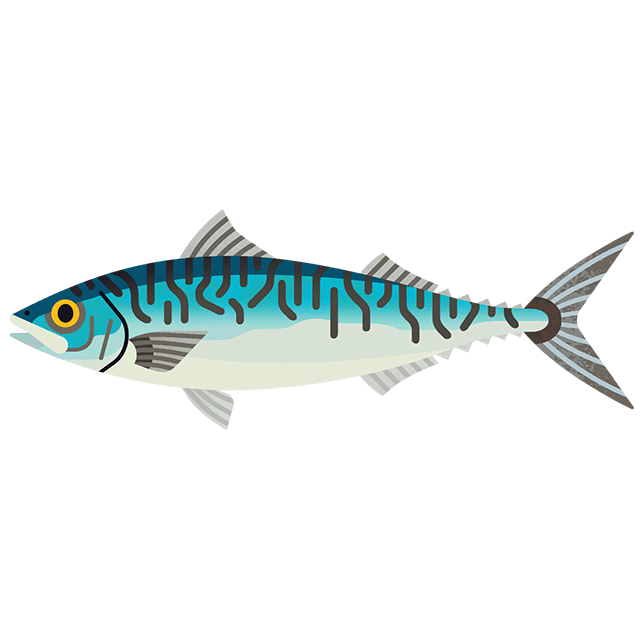
What makes seafood unsustainable?
The most unsustainable seafood is red-rated in our Good Fish Guide. We need to change how we fish, farm and purchase seafood to help protect our seas.
Why should we avoid eating some types of seafood?
The future of the fish supper is no longer guaranteed. Many fish stocks are in a state of serious decline, with overfishing a great threat to marine wildlife and habitats. With 90% of world fish stocks fully or over-exploited from fishing, plus pressure from climate change and pollution, we’re moving into dangerous waters when it comes to the fish of the future.
We are leading the way on changing habits. You can help reduce the strain on certain species by demanding that the fish you eat comes from sustainably managed stocks and is caught or farmed in a way that causes minimal damage to the marine environment and other wildlife. Doing the right thing is easier than you think with our Good Fish Guide – it really can make a difference.
Red-rated wild caught seafood
In the last 50 years, fishing has been the leading cause for loss of marine biodiversity and scientists are concerned about the threats facing our seas.
Endangered species
Overfished and depleted stocks
Overfishing happens when a species is removed faster than it can reproduce. The more that fish stocks become depleted, the greater the risk that they won’t recover at all, which can be devastating for fishers and the marine environment.
What needs to be done
Governments need to make sure that fishing regulations are appropriate and based on the best available science, providing incentives that encourage fishers to adopt best practices on their boats. Businesses and consumers should always seek out the most sustainable seafood and businesses can also use their influence to encourage improvements.
Habitat or wildlife damage
Fishing methods like trawling or dredging can cause long-lasting damage to the sea bed and marine habitats. Additionally, certain practices, involving longlines and gill nets for example, can sometimes accidentally catch vulnerable species like turtles, sharks, seabirds and porpoise.
Illegal, Unreported and Unregulated (IUU) fishing
Illegal, Unreported and Unregulated (IUU) fishing occurs around the world and undermines attempts to sustainably manage fisheries. Global financial losses from IUU fishing are estimated to be between US $10 billion and US $23.5 billion annually (between 10 and 22% of total fisheries production).
What needs to be done
Monitoring IUU fishing is a tough task, largely because it occurs a long way from land and across enormous areas of water. Governments need to make sure that they have enough resources to properly monitor fisheries and are utilising the latest technology to do so. Businesses need to ensure seafood is fully traceable and must check that the seafood they buy is from a vessel that was fishing legally.
Red-rated farmed seafood
Unsustainable juvenile fishing
Unsustainable fish food
Most farmed fish and prawns are given a pelleted feed, nearly all of which contains fishmeal and fish oil. The fish used to make this feed are not always sustainably managed, leading to their stocks becoming more and more depleted. This has a negative impact on the surrounding ecosystem and other species that rely on them as food in the wild.
What needs to be done
It is important that the fish used to make feed are sustainably managed- this is the only way we can ensure their future. We are seeing some progress, with a number of improvement projects around the world working to achieve this. We want to see incentives from governments to encourage and develop these kinds of projects. Businesses should adopt policies that ensure all feed ingredients are traceable and certified as responsibly managed and produced.
Chemical use
When used in a responsible way, overseen by a vet and within regulations, antibiotics are acceptable and necessary. But they can also be used irresponsibly for things like growth promotion. This is a concern for both the environmental impacts this has on the surrounding ecosystem and for the development of antibiotic resistance.
What needs to be done
There has been a reduction in the use of antibiotics in many fish farms since the development of effective vaccines to treat diseases. Governments need to ban improper uses of antibiotics and introduce regulations that restrict their availability. Businesses should preferentially source certified farmed seafood where chemical use is monitored and restricted.
Untraceable, uncertified seafood
We need to be able to tell if our seafood has been farmed in a responsible way. The packaging our seafood comes in should contain all of the information we need to make an informed choice.
What needs to be done
Buying certified seafood (like the green tick logo of the Aquaculture Stewardship Council) ensures that what we are buying can be traced back to a farm that uses responsible practices. Some farms need help to achieve such certification, and this is happening via improvers projects around the world. Businesses should preferentially source certified farmed seafood and provide information on pack to enable consumers to make the best choice.








